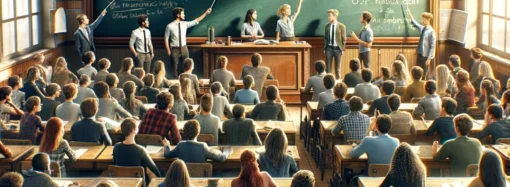Back to school
READ BEFORE YOU PROCEED: D2G wears no responsibility of the views published here by the respective Author. This Editorial is used here for Study Purpose. Students are advised to learn the word-meaning, The Art of Writing Skills and understand the crux of this Editorial.

Meanings are given in BOLD
The countrywide shutdown of schools to stem the spread of the coronavirus might be drawing to an end, as the Centre okays an in-principle reopening from October 15. The discretion ( the quality of behaving or speaking in such a way as to avoid causing offence or revealing confidential information ) to do so lies, rightly, with the states, who can decide how and at what pace ( walk at a steady speed, especially without a particular destination and as an expression of anxiety or annoyance) to reopen the classroom.
The pandemic has thrown up an impossibly hard choice for schools, children and the wider community of parents and teachers. For nearly eight months now, even the most privileged among them have been able to access only a diminished ( cause to seem less impressive or valuable ) experience of learning via digital devices.
The yawning digital divide has put a vast majority of children, especially the most vulnerable ( exposed to the possibility of being attacked or harmed, either physically or emotionally ) in terms of gender, class and caste, at the risk of being abandoned ( discontinue (a scheduled event) before completion ) by the school system.
The loss is not just in terms of learning outcomes. The functional school is, among other things, a safety net, preventing students from falling into child marriage or daily-wage labour. The hot mid-day meal served to over 120 million children a day is a defence against child malnutrition ( lack of proper nutrition, caused by not having enough to eat, not eating enough of the right things, or being unable to use the food that one does eat).
In this backdrop, it is important that state governments, local administrations and communities have the freedom to decide how best to bring back the children. Cities where coronavirus infections show no sign of abating ( reduce or remove (a nuisance) ) have to remain cautious, especially given recent research on the capacity of children to spread the virus.
In rural areas and districts where the virus had not had a free run, teachers and community leaders are best placed to shape the school experience — whether to bring back the oldest students first, and how many shifts to run. The new classroom that will welcome students back will be a vastly ( to a very great extent; immensely ) different one.
It will be a quieter ( making little or no noise ) place, with fewer students, and a regime ( a government, especially an authoritarian one ) of social distancing, handwashing and hygiene reinforced through floor drawings and posters. From lunch breaks to the day’s schedule, the school will have to re-imagine ways to create a sense of solidarity ( mutual support within a group), while ensuring distance and safety.
The protocols on how to respond in case of an infection and how to transport children safely must be in place before schools can reopen.The Centre has done well to advise against the rigours ( the quality of being extremely thorough and careful) of testing, exams and appraisal from the word go, given the long disruption ( disturbance or problems which interrupt an event, activity, or process) in learning.
Teacher initiatives during the lockdown have also proved that a crisis ( a time of intense difficulty or danger) can be used to bypass the rote-learning-exam regime and help children express themselves through writing, plays and games that connect lessons to their life experiences.
Just as a decentralised ( transfer (authority) from central to local government ) approach will work best in opening up the classroom during a pandemic, the schools must ensure that the process to catch up on lessons and syllabi is stress-free but attuned ( make receptive or aware) to the needs of the individual child.
Download month wise Current affairs 2020 PDF and Current affairs quiz PDF .







